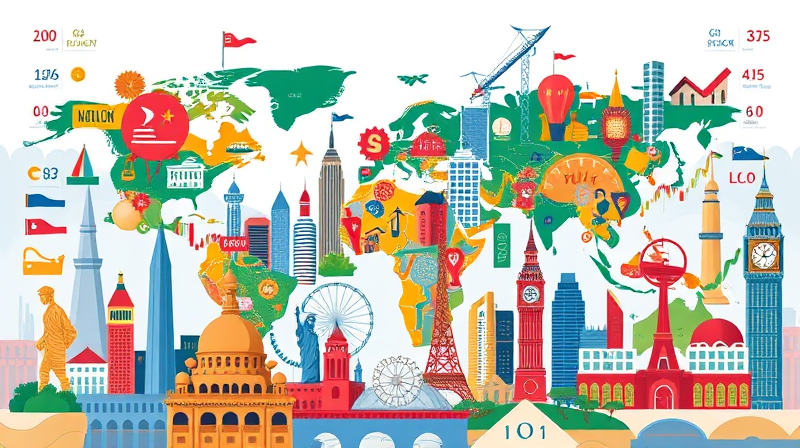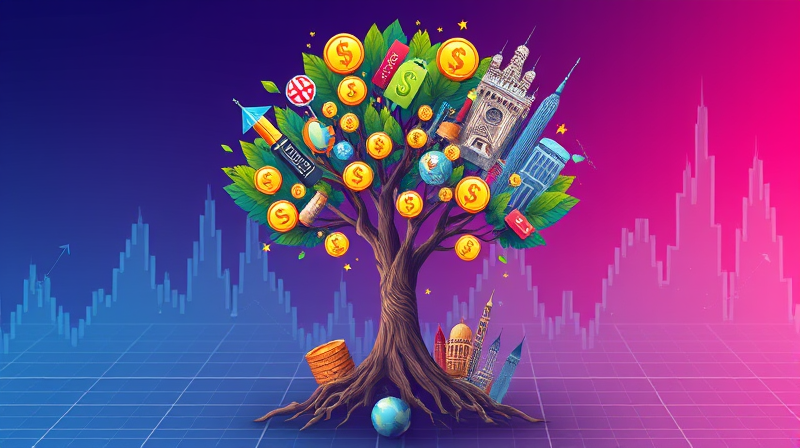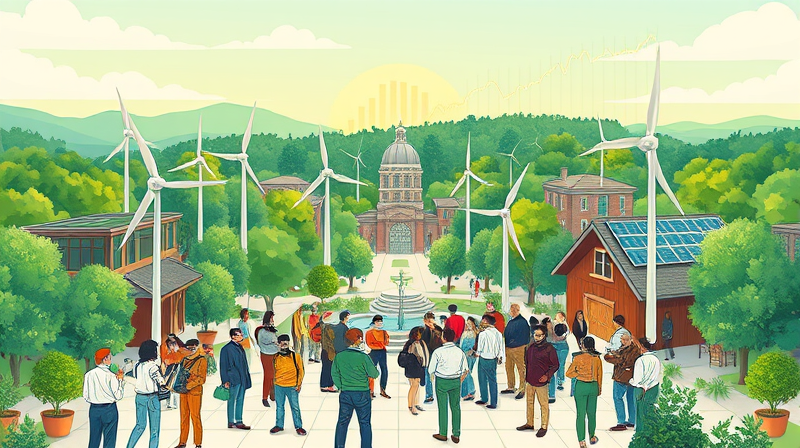In 2025, technological breakthroughs are not just reshaping industries—they are redefining how and where capital flows. From the cutting-edge realm of artificial intelligence to the surging momentum of clean energy, investors are positioning themselves at the crossroads of innovation and opportunity. This exploration reveals the trends and strategies that will influence portfolios for years to come.
The Rise of AI and Digital Infrastructure
Once a futuristic concept, AI now stands as a cornerstone of modern investment strategy. Enterprises worldwide are directing massive budgets toward machine learning, automation, and adaptive robotics to drive efficiency and unlock new revenue streams.
Experts project enterprise spending on AI to compound at an annual growth rate of 84% over the next five years, illustrating how AI spending continues to skyrocket across sectors. Major tech giants—Amazon, Meta, Google, and Microsoft—plan to pour over $250 billion into AI infrastructure in 2025, building the hardware and data centers needed for next-generation applications.
- Infrastructure Build-out: Expanding global data centers with specialized AI hardware.
- AI Chips: Fueling demand for CPUs, GPUs, and power-efficient accelerators.
- Computing Hardware: A race to deploy advanced AI models at scale.
For investors, the challenge lies in identifying which segments of the AI value chain will deliver the greatest returns. Companies involved in semiconductor design, cloud services, and enterprise software all stand to benefit from this transformative wave.
Accelerating the Energy Transition and Sustainability
The power demands of AI are creating a symbiotic relationship with the energy sector, especially renewables. In 2025, renewable sources are expected to generate more electricity than coal worldwide for the first time, marking a pivotal moment in the global shift toward sustainability.
Investment in solar, wind, and hydroelectric technologies is now outpacing traditional fossil fuels, driven by both environmental imperatives and economic potential. Renewable energy overtakes coal generation as governments and corporations set ambitious carbon-neutral targets.
Moreover, as data centers expand, demand for reliable, green power is soaring. Nuclear facilities and large-scale battery storage projects are also attracting substantial investment, creating a diversified landscape for those looking to marry profitability with purpose.
Blockchain, Cryptocurrency, and the Future of Finance
Blockchain’s rise from niche technology to mainstream financial infrastructure is one of the most compelling stories of recent years. In 2024, Bitcoin soared past $100,000, propelled in part by the launch of exchange-traded funds (ETFs) from major investment firms.
By 2025, traditional banks and fintech startups alike are leveraging blockchain networks to enable near-instant settlements and unprecedented transparency. Tokenized versions of currencies and real-world assets are streamlining transactions, reducing costs, and opening new markets to investors of all sizes. Blockchain transforms traditional banking transactions, creating a more efficient, inclusive financial ecosystem.
The Fintech Revolution: Democratizing Financial Services
Fintech continues to dismantle barriers between consumers and financial products, turning once-exclusive services into universally accessible tools. Digital wallets, robo-advisors, and peer-to-peer lending platforms illustrate how technology can democratize wealth management.
- Cryptocurrency and digital tokens built on blockchain systems
- Open banking APIs fostering collaboration among financial institutions
- Insurtech solutions streamlining risk assessment and claims processing
- Regtech platforms automating compliance and reporting
- Robo-advisors offering algorithm-driven portfolio management
- Services tailored for the unbanked and underbanked populations
- Advanced cybersecurity measures protecting digital assets
As these areas mature, investors must stay attuned to regulatory shifts and emerging partnerships between incumbents and startups. The pace of innovation is rapid, but so is the potential for outsized rewards.
Semiconductors and the New Frontiers of Computing
Chipmakers are racing to meet the demands of AI, edge computing, and the Internet of Things. In 2025, the semiconductor industry will be defined by specialization and resilience as companies navigate geopolitical tensions and supply-chain complexities.
- Generative AI accelerator chips for PCs and smartphones
- AI-enabled evolutionary design methodologies
- Global talent shortages in specialized engineering roles
- The imperative of building resilient cross-border supply chains
Semiconductor industry adapts to geopolitical tensions as nations vie for technological supremacy. While PC and smartphone chip sales grow modestly, data center and communication chip segments continue to outpace automotive and industrial markets.
Investors targeting semiconductor firms should assess technological leadership, manufacturing partnerships, and the ability to innovate under political and economic pressures.
Navigating Risks and Regulatory Challenges
Breakthroughs bring new vulnerabilities. The proliferation of IoT devices, cloud infrastructures, and generative AI platforms expands the potential attack surface for cybercriminals. The global cost of cybercrime is projected to reach $10.5 trillion in 2025, underscoring the importance of robust security solutions.
Geopolitical tensions, particularly between major powers, introduce uncertainties in supply chains and market access. Regulatory frameworks around AI ethics, data privacy, and digital assets continue to evolve, creating both obstacles and openings for forward-looking investors. Fintech innovations democratize financial advice but also necessitate careful scrutiny.
Successful investment strategies will balance the promise of high-growth sectors with thorough risk management, regulatory compliance, and contingency planning for disruptive events.
Key Takeaways for Investors
The convergence of AI, sustainability, blockchain, and fintech is forging a new investment paradigm—one defined by collaboration between technology pioneers and capital allocators. To thrive in this dynamic environment, investors should:
- Identify niche opportunities within broader tech megatrends
- Monitor regulatory shifts and engage with compliant platforms
- Diversify across hardware, software, and service-oriented segments
- Prioritize companies with strong ESG and cybersecurity credentials
- Stay agile to capitalize on emerging partnerships and spin-outs
By embracing innovation thoughtfully and rigorously, investors can position their portfolios to capture the transformative power of technology—today and well into the future.
References
- https://www2.deloitte.com/us/en/insights/industry/technology/technology-media-telecom-outlooks/technology-industry-outlook.html
- https://www.dwassetmgmt.com/blog/investment-trends-to-watch-in-may-2025-and-beyond
- https://www.plantemoran.com/explore-our-thinking/insight/2025/01/2025-tech-industry-trends
- https://www2.deloitte.com/us/en/insights/focus/tech-trends.html
- https://am.gs.com/en-no/advisors/insights/article/2025/technology-in-2025-the-cycle-rolls-on
- https://www.investopedia.com/terms/f/fintech.asp
- https://www.dealmaker.tech/content/the-shifting-landscape-cleantech-capital-in-2025
- https://www.mastercard.com/news/perspectives/2025/what-to-expect-in-crypto-in-2025/










